There are, or can be, many steps on the journey of craft (and vision!). The moment we stop paying so much attention to how much light is in a scene and begin to notice its quality is one such significant step forward. Another for me was when I changed my thinking about my lenses and started choosing my focal lengths based on the behaviour of the optics—what they made the scene look and feel like—not just how much stuff they allowed me to squeeze into the frame.
These steps forward happened a long time ago for me, but others took longer to learn—the shift from thinking about photographing things to photographing ideas, for example. That was a big one for me. So too was the change from a focus on single images to bodies of work, though that wasn’t so much an epiphany as a long, slow awakening that began as I realized all the photographers I truly admired were shooting longer series of images: bodies of work that allowed them to go deeper on a subject, theme, or idea than just one lucky shot here and there.
There are, or can be, many steps on the journey of craft (and vision!). The moment we stop paying so much attention to how much light is in a scene and begin to notice its quality is one such significant step forward. Another for me was when I changed my thinking about my lenses and started choosing my focal lengths based on the behaviour of the optics—what they made the scene look and feel like—not just how much stuff they allowed me to squeeze into the frame.
These steps forward happened a long time ago for me, but others took longer to learn—the shift from thinking about photographing things to photographing ideas, for example. That was a big one for me. So too was the change from a focus on single images to bodies of work, though that wasn’t so much an epiphany as a long, slow awakening that began as I realized all the photographers I truly admired were shooting longer series of images: bodies of work that allowed them to go deeper on a subject, theme, or idea than just one lucky shot here and there.
It is bodies of work to which I now give almost all my focus as a photographer.
If you were on a workshop with me, perhaps in Venice or India, this is what we would work on. Bodies of work push us harder as photographers. They demand we find a through-line in our work. They force us to make choices about what we photograph and how, especially as we work to create those collections of images in a way that allows them to work together.
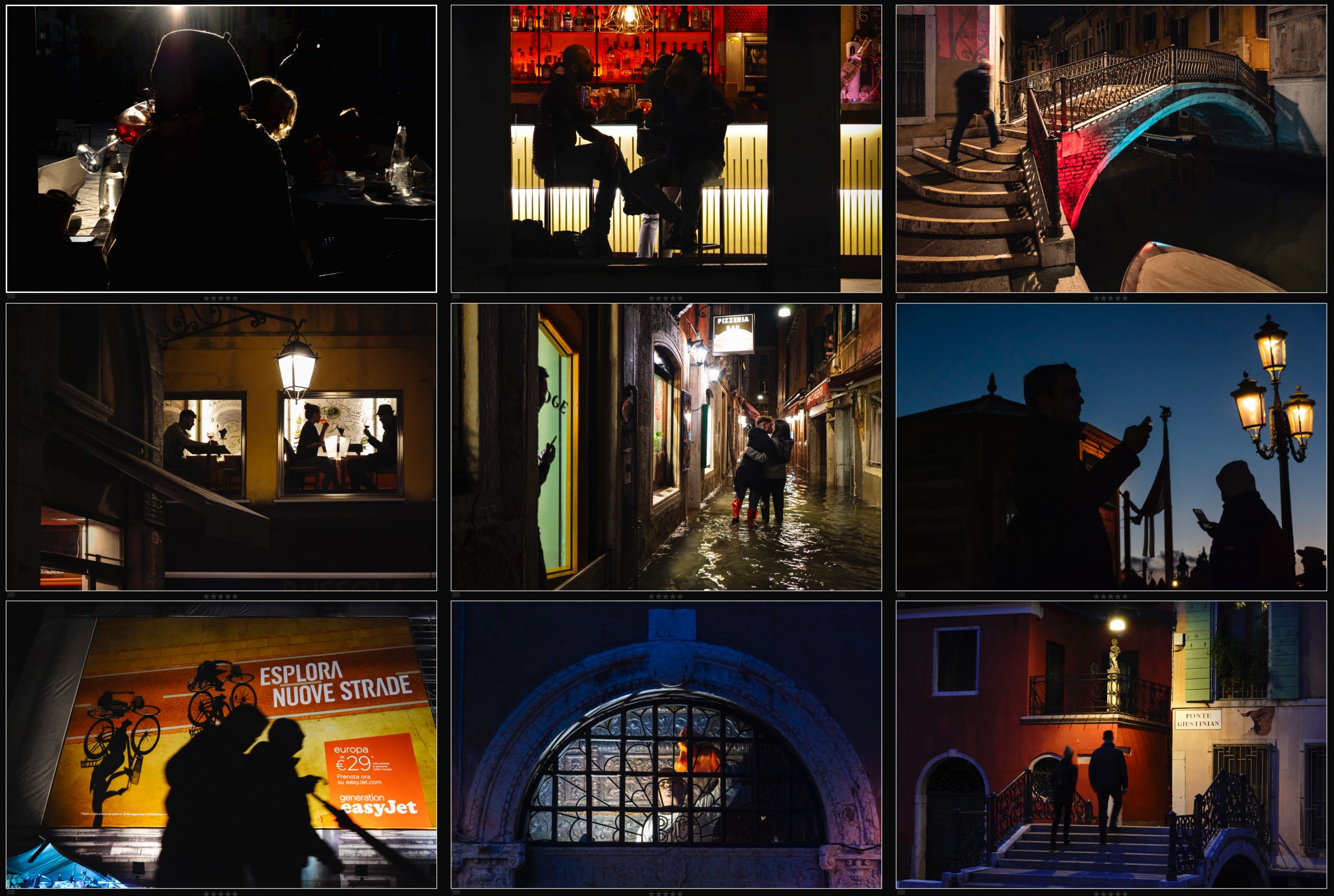
9 Frames from a short series exploring the light and colours—mostly after dark—of Venice, Italy.
Choose a Theme
On the first day of our hypothetical workshop together, I would give you the simple homework that would fill the coming week. Go wander with your camera alone, and decide what you want to explore photographically. In other words, go find a theme. It might be life in a specific neighbourhood. It might be expressions of faith. Some of my students have chosen themes that include celebration, urban decay, food, craftsmen, and tourism. One did self-portraits in Rome. Another photographed people taking selfies. The idea is to find a hook on which to hang your photographic exploration for a week.
Choose Your Constraints
Now choose some constraints. In other words, which limitations will you work within to give the resulting images some cohesion so when they’re presented together as a series of 12 they clearly belong to each other? Will all 12 images be a certain aspect ratio or frame orientation? Will this be a black and white series or colour? What kind of colour palette? Will it be soft and muted or bright and alive? Will you constrain yourself to one lens, one kind of light or time of day? To make these choices, you’ll be willingly challenging yourself and owning some of your particular preferences and tastes. Not everyone finds this easy. And yet….
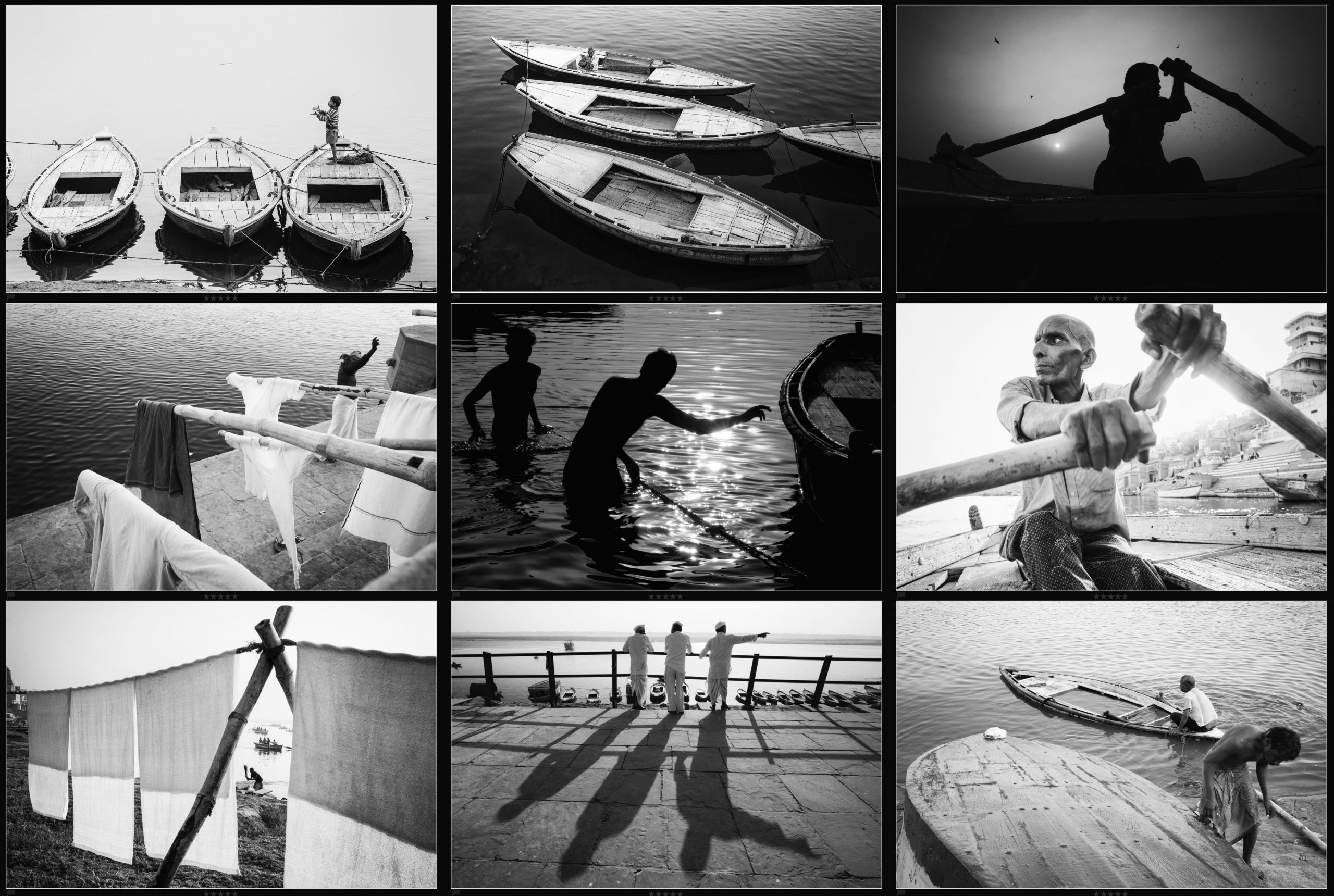
9 frames from a body of work made on the Ganges River at Varanasi, India.
By at the end of our week together (and several conversations about your photographs over coffee or wine), you’d have whittled down your many images to 12 and found in them a sequence that makes sense to you. On the final evening, we’d all sit together and show those bodies of work and marvel at what others had seen that we had completely missed—a vision so different from our own of a place we’d otherwise shared. And we’d all see in the work of others the unmistakable voice of that person.
This is one of my highlights as a teacher: to see photographers awaken to their own voice as they’ve made tighter decisions and forced themselves to work within them, to do only what’s most important to them, to be creative in their own way within a set of self-imposed constraints and personal tastes.
Twelve images on a theme, within chosen constraints. Sounds easy, right?
That simple assignment has changed the way I photograph. It has encouraged greater creativity, decision-making, depth, and discipline. It has forced me to see my edits differently. To think of sequences. To choose through-lines for my work and seek out the images that might best connect to those themes. It has made me a more thoughtful photographer over the years, one who asks “what am I trying to accomplish here?” while making the kinds of choices that help answer that rather than shooting blindly or only opportunistically. To seek and not only to accept what comes (though I do that, too). And as I’ve pursued this, my projects have gone from 12 images to 24, to 48, and more. One year’s work has added to another, and then again to another, and the work has found new rhythms and the occasional unexpected but beautiful detour.
A single image can only do so much—can only say so much. It gives fewer opportunities for nuance, to tell a bigger story. I think one compelling single image can too easily convince us we are further along in our craft than we are. One image is a lucky shot (and yes, ultimately they’re all lucky, and so are we to do what we do), but a body of work is a more challenging thing to get to. And for me, it is much more rewarding.
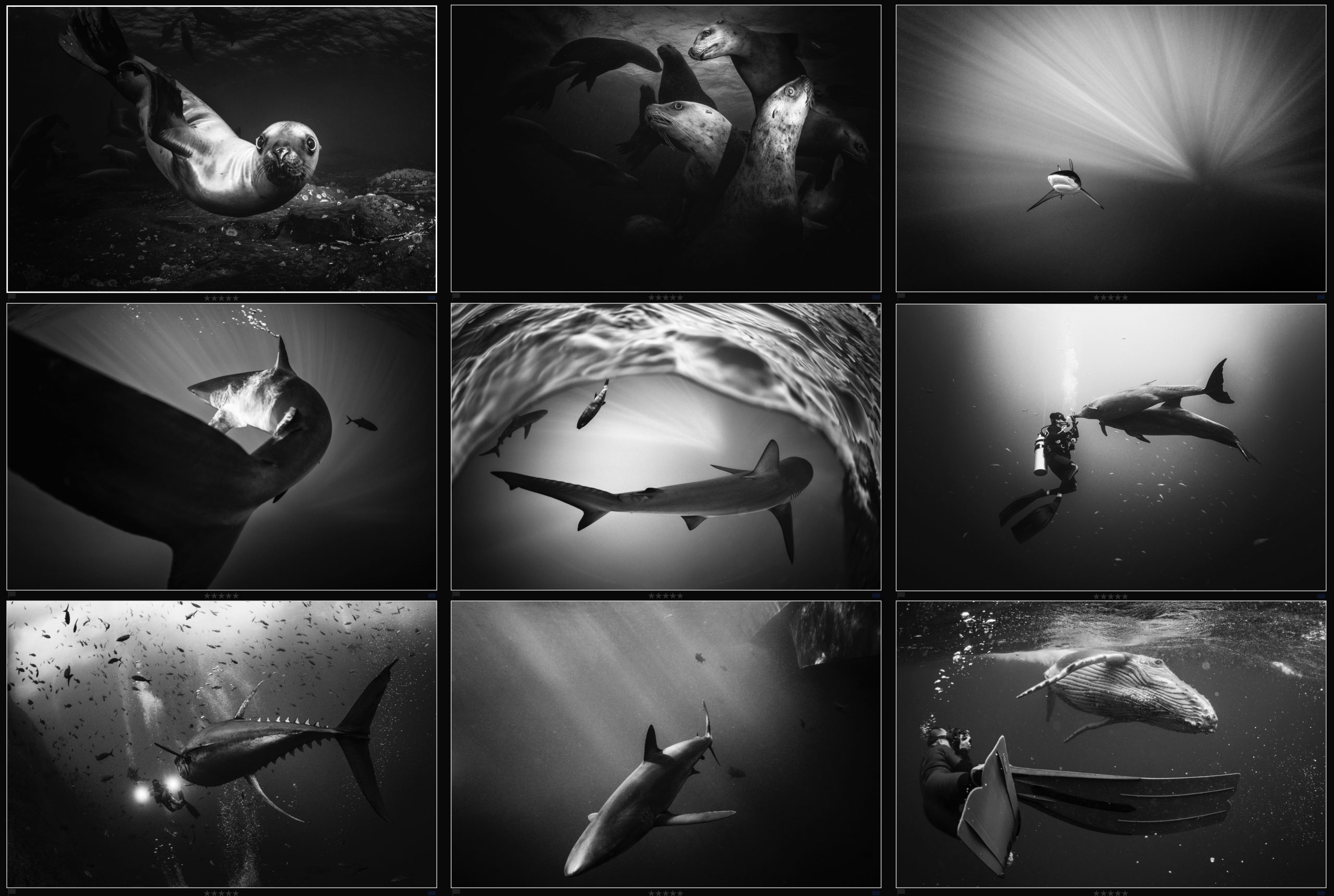
9 frames from my on-going black and white underwater work.
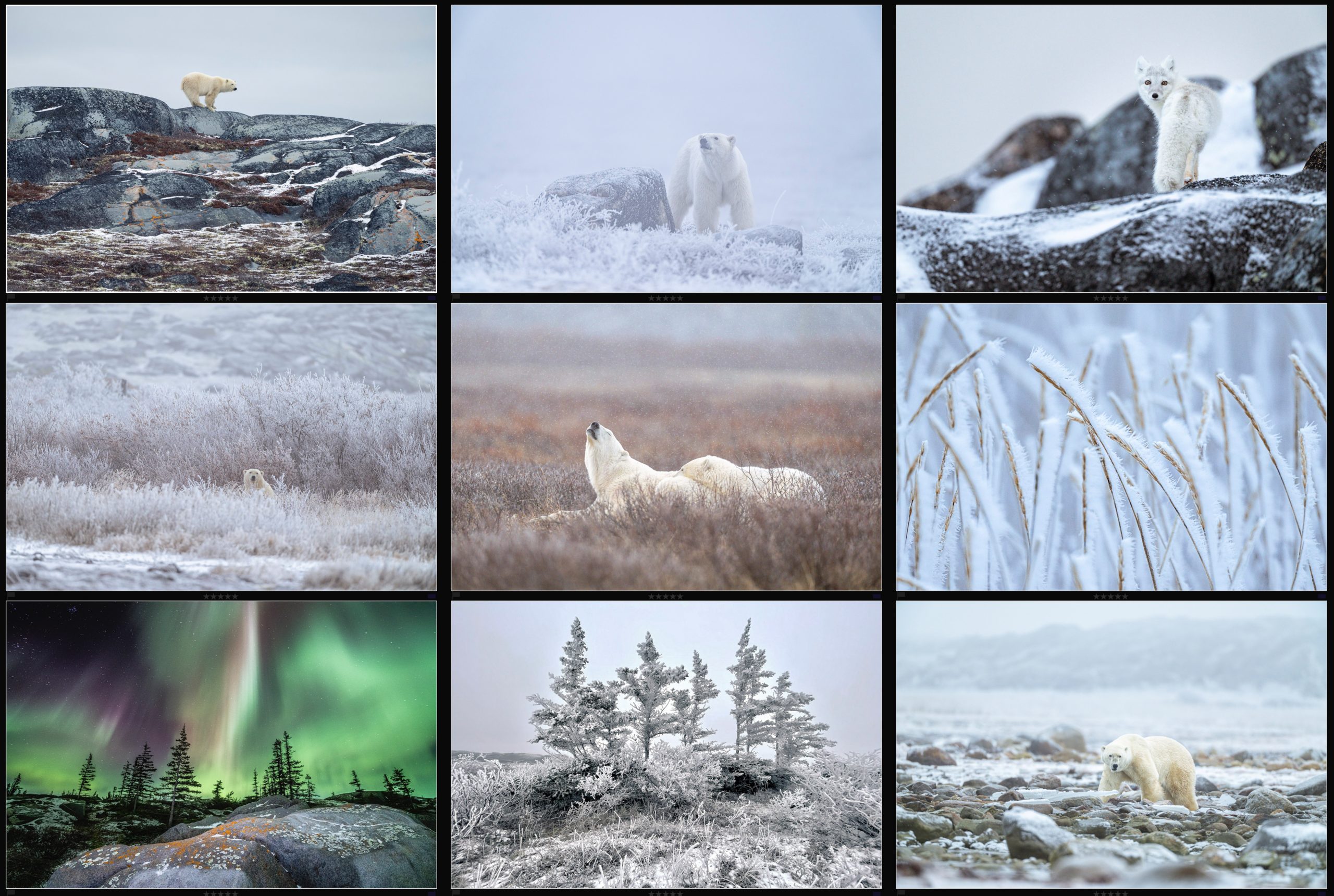
A sample of the images from the very beginning of a series from Churchill, Manitoba.
I wonder if this is the next step for you? Have you been working in this way and noticed the benefits? I’d love to hear from you in the comments? If not, what would it take to make this your next move forward? If you’re like many of my first-time students, the reaction is, “I don’t think I can do this!” But you can. I’ve never had a student finish the week without doing so and feeling the exhilaration of seeing their work reflect back to them both a vision and voice they weren’t even aware were theirs.
It’ll be a while before I’m doing workshops again (though read below if you’d like to learn from me in person), but you don’t need me to make this a new way of working your craft and going deeper: twelve images on a theme, created within some intentionally-chosen constraints. Challenge is what drives growth in any craft, skill, or medium. And like the bodies of work I’m encouraging you to make, I hope you’ll find in this challenge something so much more than just the sum of its parts.
For the Love of the Photograph,
David
Coastal Vision 2022.
Spend time with me on Prince Edward Island this July.
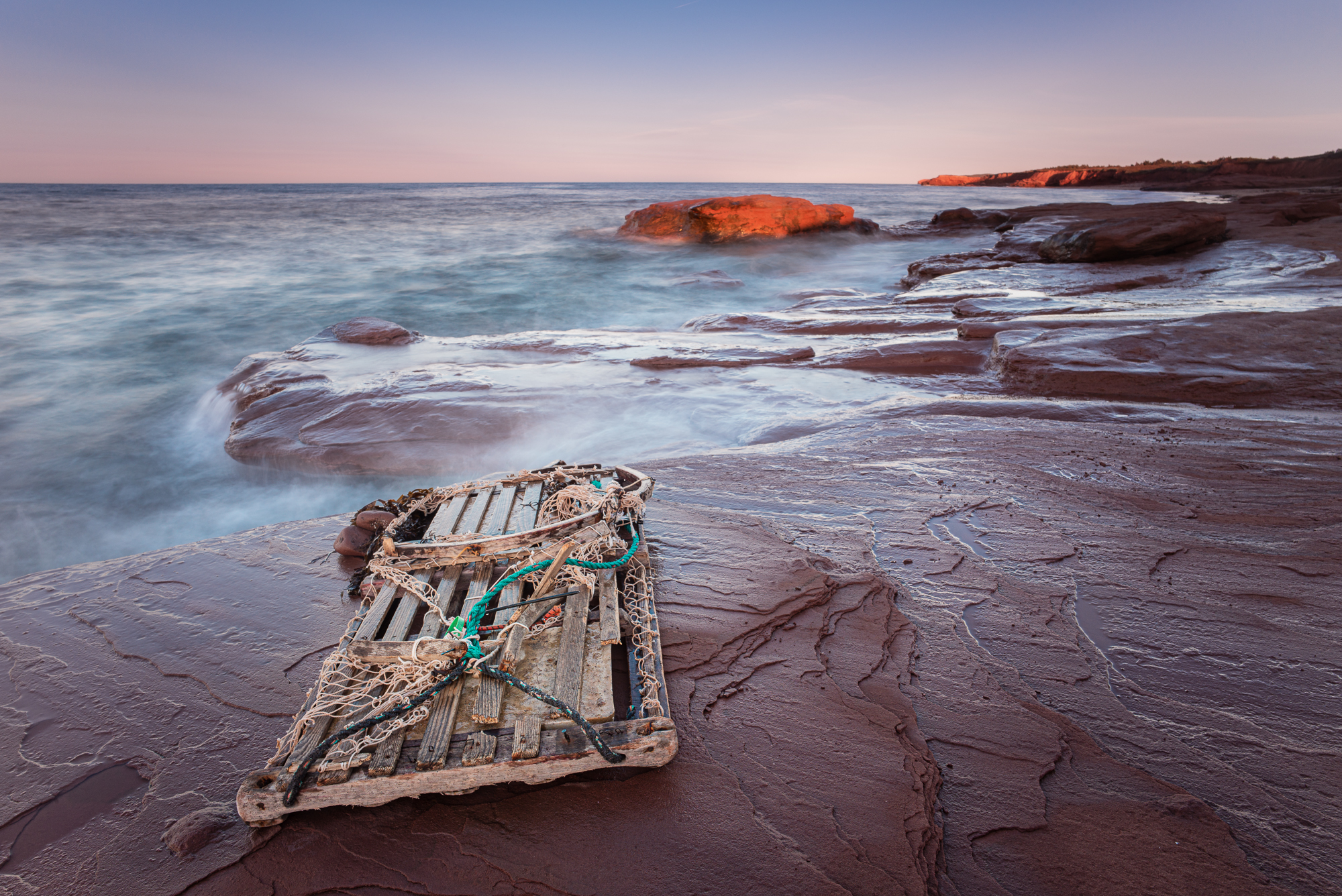
I won’t be doing international travel workshops until at least 2023, though I don’t have anything planned at this point. But if you’re looking for a chance to learn from me (and I’ll be teaching about bodies of work, among other ideas), I will be on Prince Edward Island for two back-to-back opportunities in July of this year.
This 3-day conference (I’m not sure what else to call it) is like a photographic love-in at a beautiful heritage barn in one of Canada’s prettiest provinces. My partner in crime, Dave Brosha, and I aim to inspire, instruct, and light new sparks in your photographic and creative life. The event is called Coastal Vision, and there are still a few spaces left in this small, intimate gathering. If you’ve been looking for a chance to connect with me, share some meals, stories, and laughter, and give your vision a good polish (or perhaps a jumpstart), this is going to be a wonderful time together. I can’t wait to see you there!
You can get more details on the July 25–27, 2022 Coastal Vision event here:
https://www.tickettailor.com/events/davebroshaphotographyltd/242831
You can get more details on the July 29–31, 2022 Coastal Vision event here:
https://www.tickettailor.com/events/davebroshaphotographyltd/262501

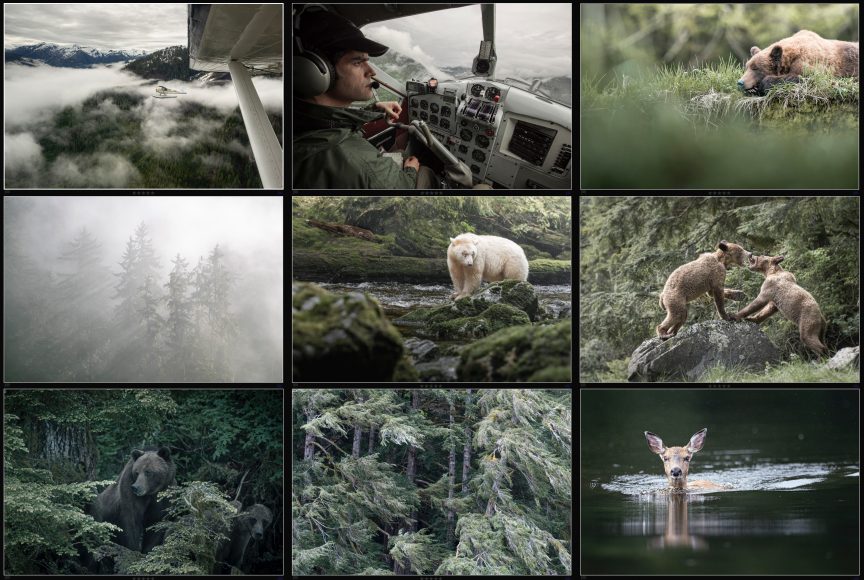
Comments
I have created and shared many individual photographs but I don’t know of I’d say I have a specific body of work.
I really like the idea of deciding on a theme and giving it constraints then creating a selection of images that all fit together. I don’t think I’ve ever done that before.
This has me really thinking about some new ways to stretch my creativity.
Sincerely,
Kyle Reynolds
https://krnaturalphoto.com/
I like the idea of putting constraints on yourself to grow as a photographer. Since I’m a portrait photographer, I tend to only use two lenses. I’m going to brush the dust off of the other two lenses that I own and try to get a little more creative. Choosing a theme might be the most challenging thing.
What perfect timing! I’m leaving for New Mexico soon and bringing “all my gear” just isn’t feasible. Trying to cull my gear has been a challenge – until this blog post about Bodies of Work. Your Next Step. I have a few ideas for a plan and will challenge myself to create images in keeping with the plan…and the gear I’m taking. THANK YOU!!!
I have been working in sequences or trying to tell a story with a family of somehow related images. The next step is how do I share these mini stories. I would appreciate some insight into sharing nd distributing my work. I m not into the sales or marketing of any of this I just want to share with friends, family and any interested parties. I live in sw Colorado community mde up of ranching folks not so much interested in fiddling with computers and we are quite bandwith limited. The best of all worlds would be to hand these folks some kind of hard copy. I did one a few years ago of the some local ranchers in the form of a book. It was appreciated but quite expensive to produce. Well beyond my means so any ideas you have would be helpful.
As you know from my earlier e-mails and following your writings including some of your books I am a fan. I would love to join you in July, but I’m afraid age has caught up with me and my ability to travel is somewhat limited.
Keep pumping out the good stuff
Bill
Thomas – Have you considered using Blurb for creating printed pieces? I’ve used their Bookwright layout software and to be honest, it’s more than capable for laying out a small printed mini magazine/booklet. I’ve done a printing in their 6×9 size Tradebook format – Cost me less than $10 to get a one off printed piece with a total of 34 pages – here’s what it looks like: https://www.blurb.com/bookstore/invited/9163963/cb86cbf263a1c3786b7284285d15fb225180d4e1
You might consider spending a little time learning the software – it’s quite user friendly and I actually find laying it out gives me a sense of completeness in having my work “published”.
My $0.02 worth
Pingback: Monday Missive — May 2, 2022 | RichEskinPhoto.com: Nature, Fine Art and Conservation Photography
I’m working around projects or bodies of work for almost ten years now. My work evolves around places close to my home, which I visit on a regular basis. Such a project is often triggered by a feeling of being attracted to a particular place – like “I should return with my camera and make pictures”. While making pictures and over time, the (superficial) visual attraction turns into familiarity and understanding. This is the point where a common motif becomes apparent; pictures just come with the flow. The camera becomes a tool of exploration and discovery, of making sense of the world.
Personally, I find this very rewarding. It doesn’t take much; a short stretch of a dismantled railroad track or an abandoned orchard can easily keep me going for a year. And in all these years, I never returned without pictures – there is always something new to discover.
I’m a big fan of constraints, and a project provides those. The location is well defined and not too large. Over time, I cane to stick to one aspect ratio, landscape orientation, and strive for common light conditions and mood. For this reason, I also abandoned zoom lenses in favour of primes, preferably a single semi-wideangle. Perhaps paradoxically, I experience these constraints as liberating.
Pingback: Bodies of Work. Your Next Step? - Ifolove